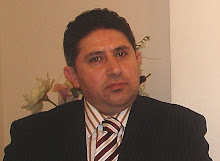
HELI-EXPO: AgustaWestland unveils new avionics suite for Grand light twin
By Brendan Sobie
AgustaWestland today unveiled the Grand New light twin helicopter at Heli-Expo 2010 in Houston. The company also disclosed that Portuguese operator Vinair will be the launch custome for the new type, which recently became the first helicopter to use synthetic vision to secure single pilot IFR certification.
“With the Grand New we’re writing a new page in the way a helicopter flies,” chief executive Giuseppe Orsi said in a ceremony opening the AgustaWestland exhibit this morning, adding that while the Grand New looks on the outside exactly like the Grand inside it features “totally new avionics that allows safe navigation in (instrument meteorological conditions”.
With satellite navigation, synthetic vision and enhanced vision terrain awareness capabilities plus a full four-axis autopilot integrated as part of the state-of-the-art flight management system Orsi promises there will be “no more blind flights”. As a result, he says pilots will be able to safely operate point-to-point flights in any weather conditions, thereby improving the productivity of the Grand.
AgustaWestland says it has already secured eight or nine orders for the Grand New although it is only now formally launching a marketing campaign for the new configuration. “Until now we didn’t commercialise it too much,” chief operating officer Bruno Spagnolini tells Flightglobal, adding that now AgustaWestland has an actual helicopter to sell he expects the Grand order book will quickly swell to “70 or more orders in this configuration”.
Vinair this afternoon signed a contract for two Grand New VIP helicopters. The company, which already operates a fleet of AW109 Powers, will become the launch operator for the new configuration in May when the first Grand New is delivered.
AgustaWestland says the other six to seven orders already secured for the Grand New are from undisclosed customers for a mix of VIP, SAR and EMS configurations. The manufacturer also expects to sell the new helicopter to law enforcement and offshore operators.
Spagnolini says the production line in Italy will switch over from the Grand to the Grand New in the second half of this year. He says AgustaWestland now plans to produce 50 to 55 Grands this year with about 50% in the old configuration and 50% in the new configuration.
Last year AgustaWestland also turned out 50 to 55 Grands, including 10 in the special Da Vinci configuration, which features new avionics to support single pilot operations but not sufficient for flight in IFR conditions. The manufacturer to date has produced about 300 Grands and says an increase in production will be considered if the new configuration leads to a spur in orders as it hopes.
“We first want to see how the market will move in the future,” Spagnolini says.
The New Grand secured EASA certification in December. Spagnolini expects FAA certification by April and first US deliveries in the second half of this year. “We are moving with the FAA. It will be a matter of just a few weeks. The FAA has already flown the helicopter and is aware of the helicopter,” Spagnolini says.
Deliveries to markets including Latin America and Asia are also expected to begin by year-end.





